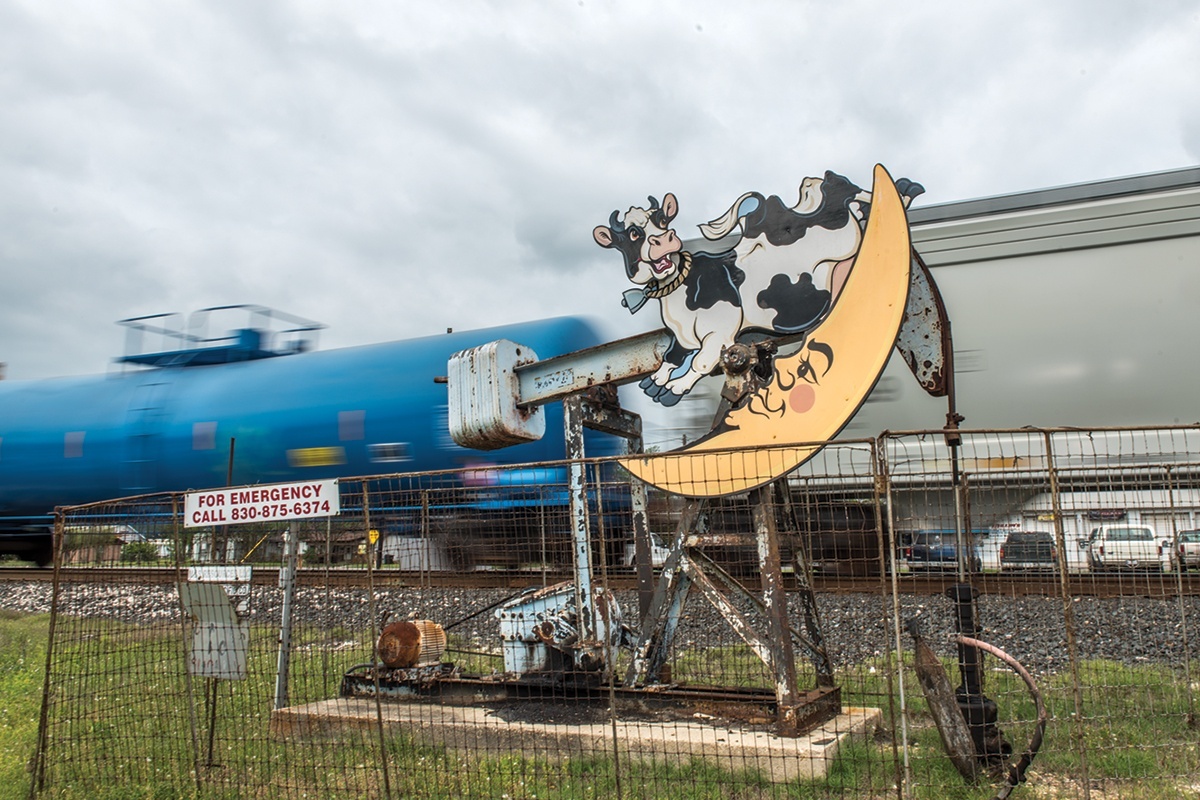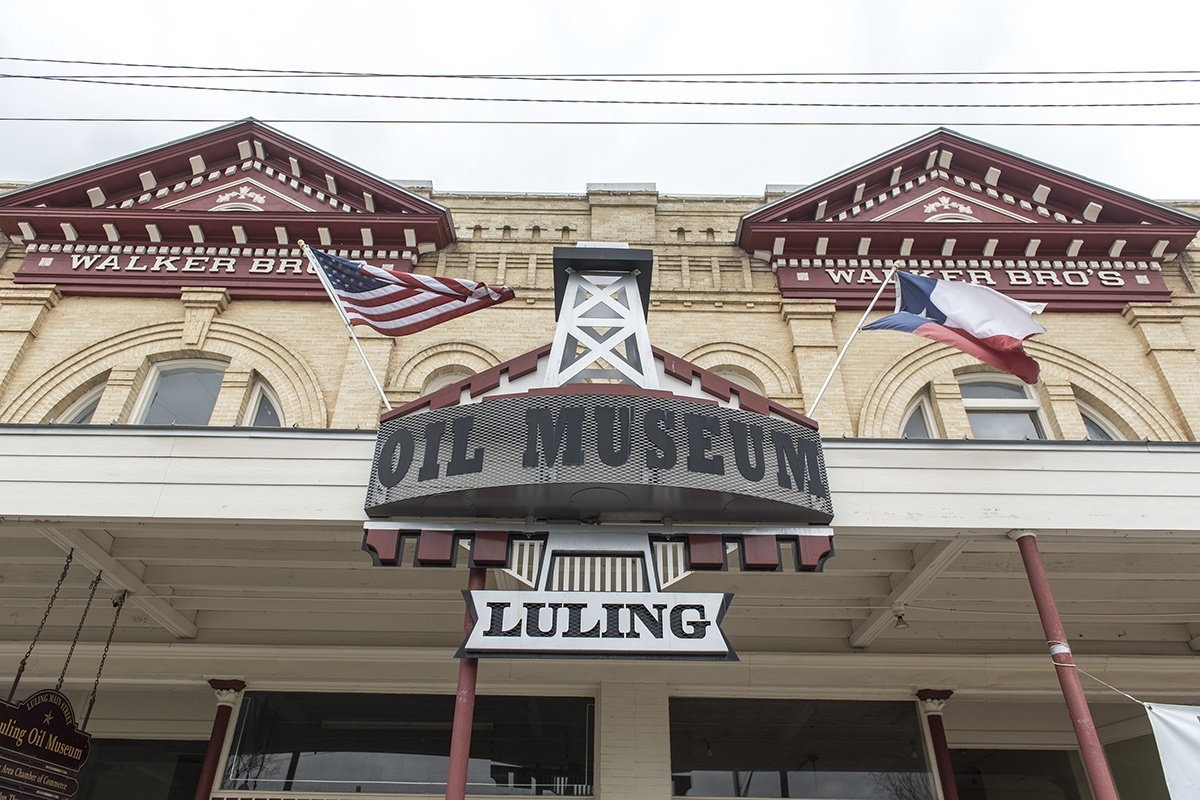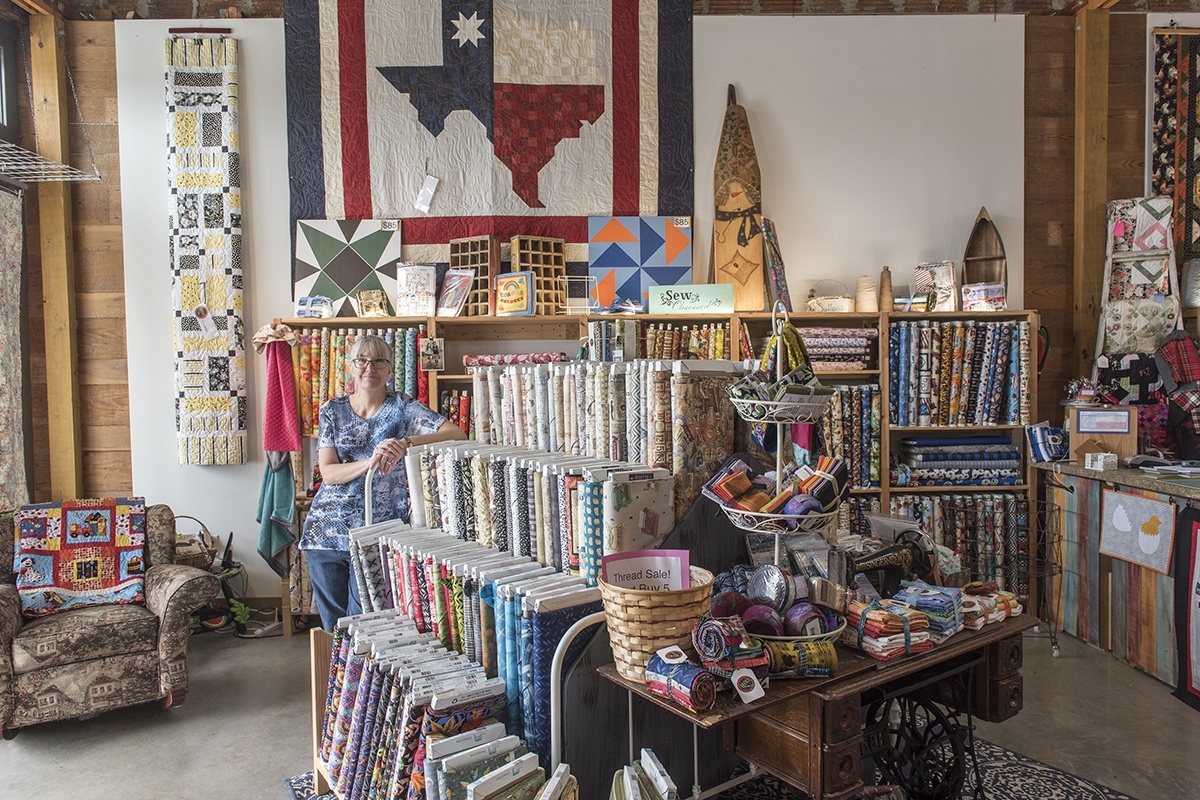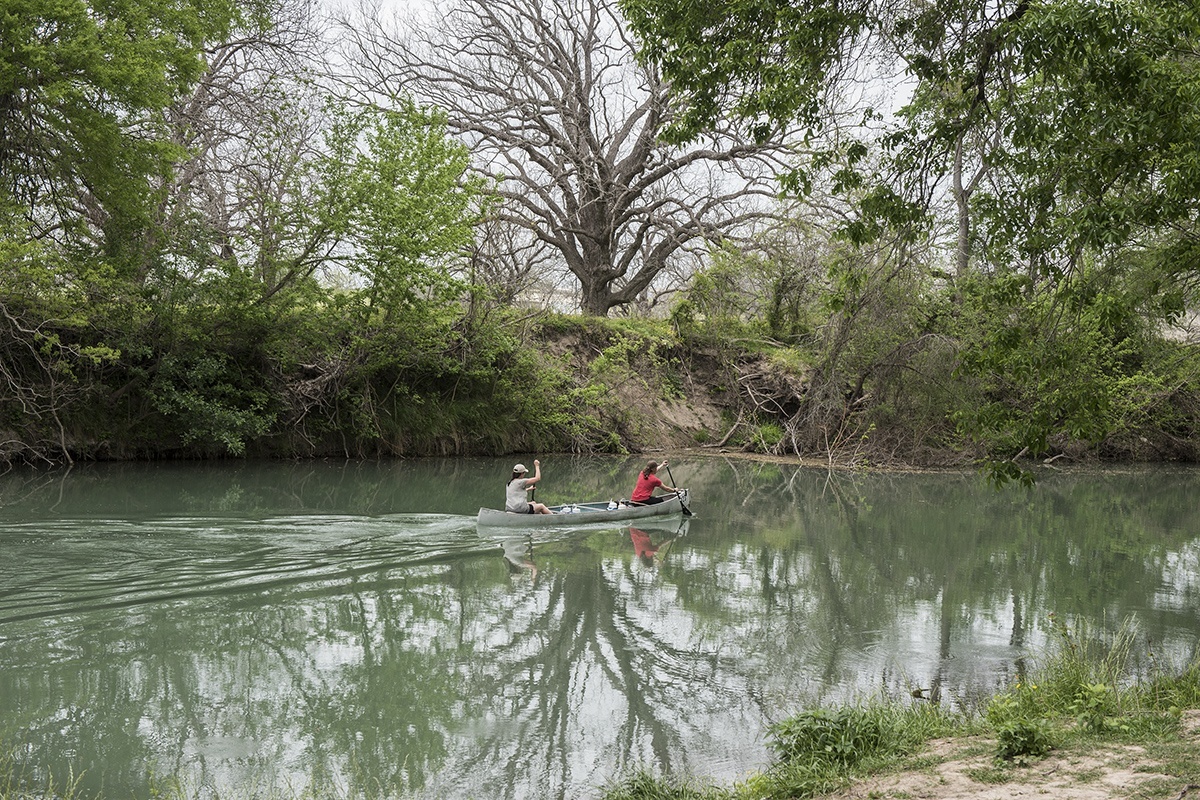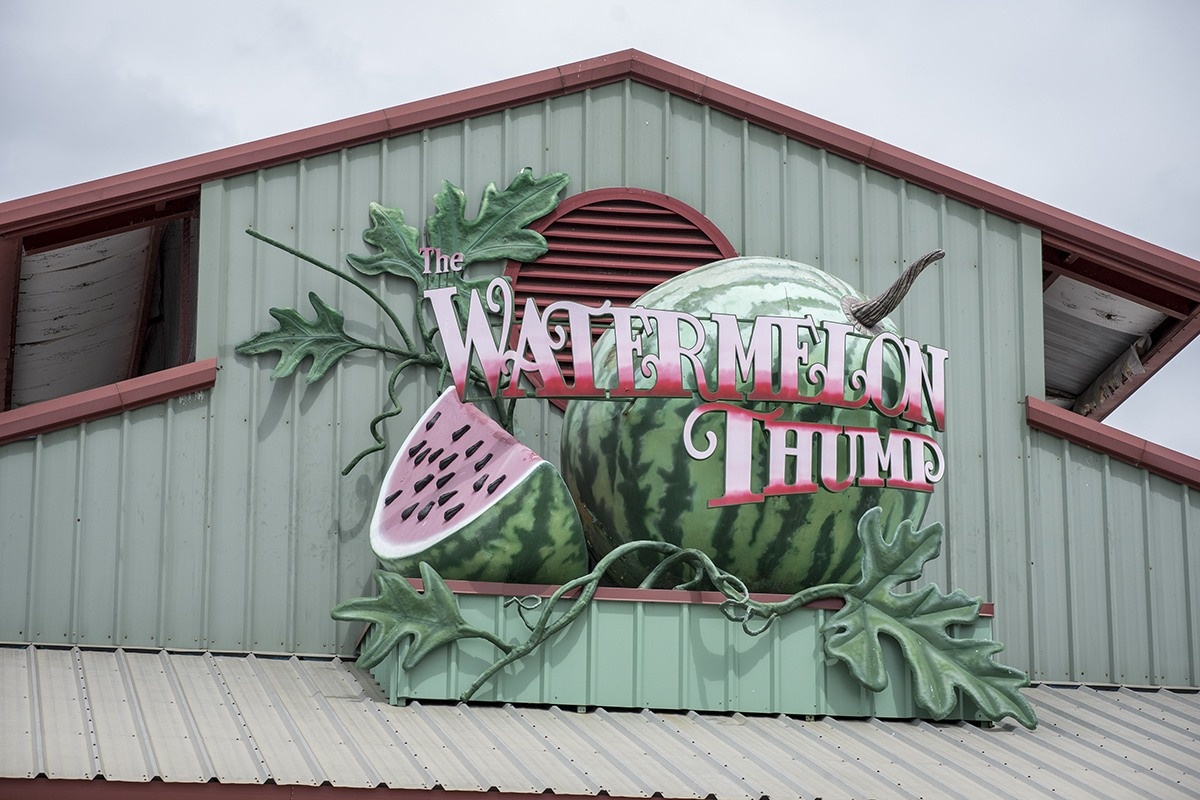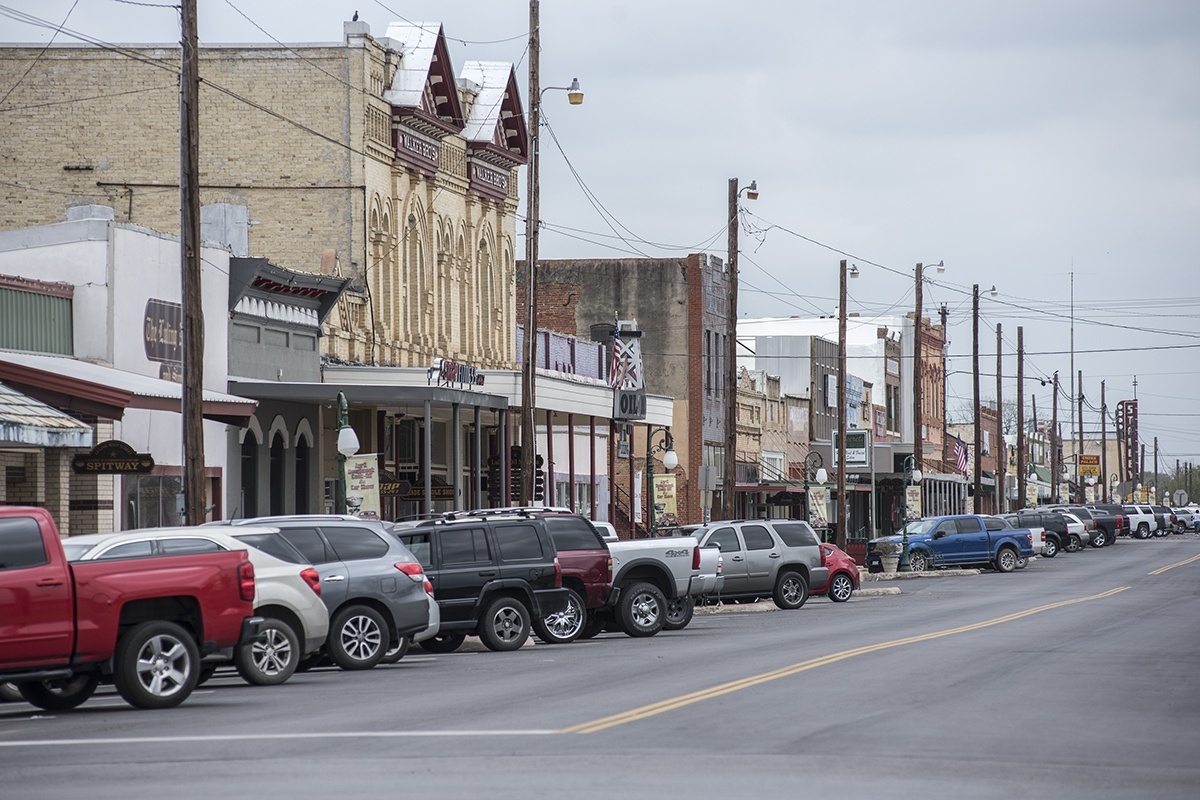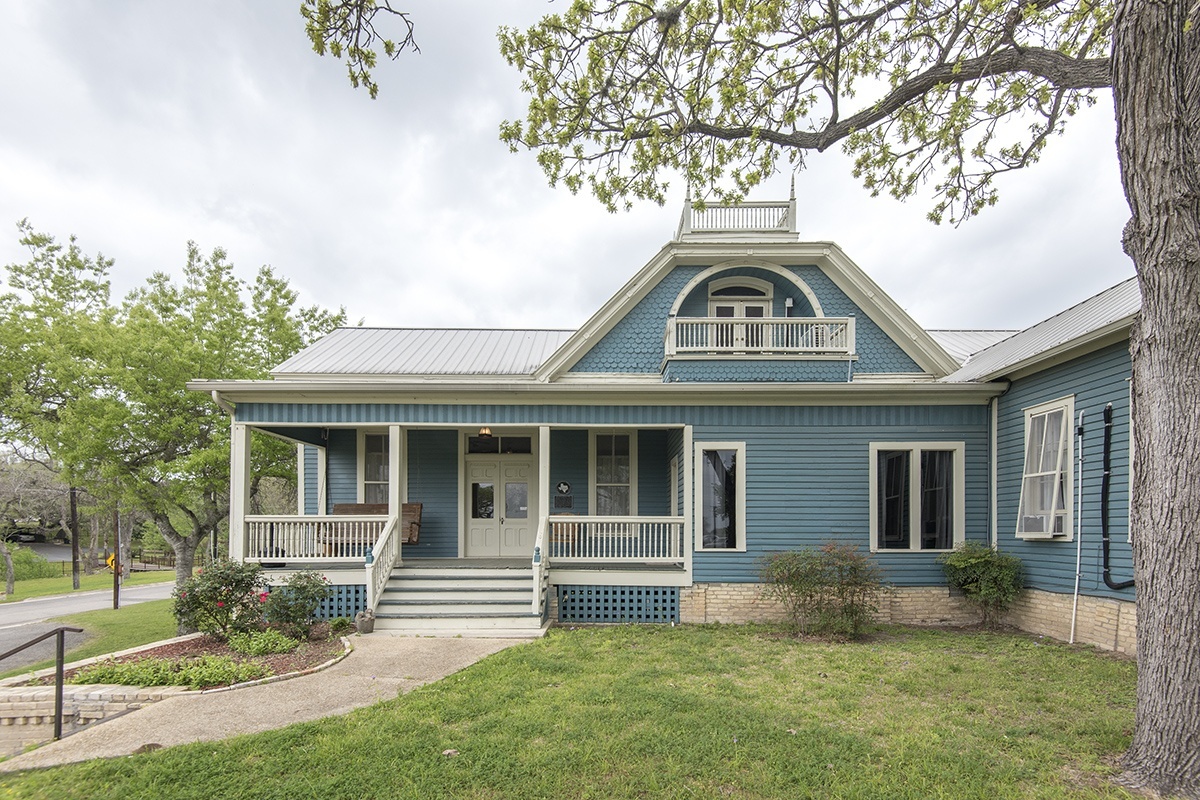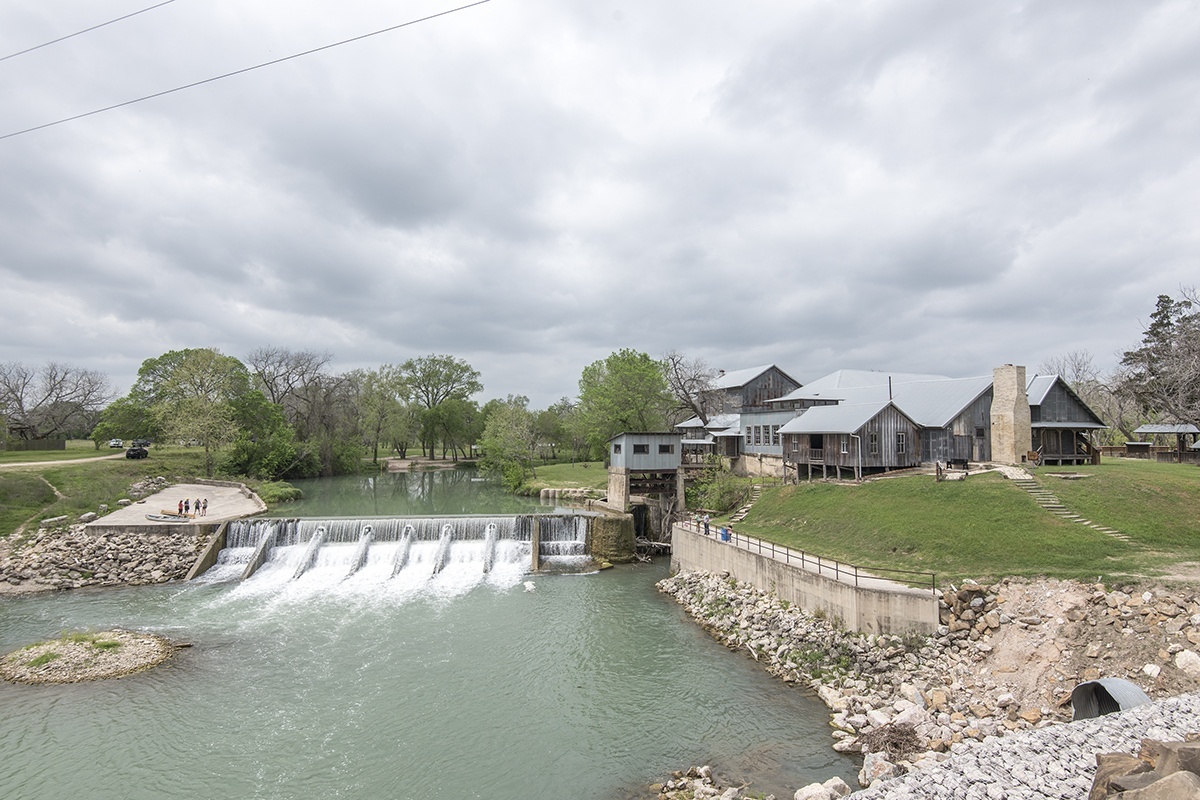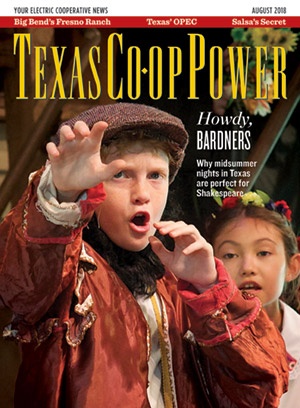When you drive into Luling, nestled along the San Marcos River about 24 miles southeast of the river’s headwaters at San Marcos Springs, you notice right away that oil plays a major role there. A monumental faux derrick soars beside a visitors center at a major intersection on U.S. Highway 183. And around town, nearly 200 pump jacks—some adorned with bright cartoon figures—summon black gold.
Luling also is known for its annual Watermelon Thump festival held the last full weekend in June. And two of its eateries—City Market and Luling Bar-B-Q—are renowned destinations for barbecue pilgrims.
From 1874 to 1876, when Luling served as the end of the Galveston, Harrisburg and San Antonio Railway, Austin newspapers said Luling was “given over to the devil” and that everyone in town “goes armed at night.” Hence, “toughest town in Texas” became a common descriptor.
I learned about the town’s drilling history at the Luling Oil Museum, housed in the 19th-century Walker Brothers building, one of the oldest mercantiles in Texas.
A colorful wildcatter with mystical inclinations named Edgar B. Davis brought in the original discovery well. Folklore recounts that the Massachusetts native drilled where he found the prettiest wildflowers, and the facts of his share-the-wealth binges are better than fiction. Davis, feeling that his gushers were gifts from God and that he needed to give back, funded enormous Luling picnics, a country club, hospitals, wildflower painting contests, a Broadway play about reincarnation and an agricultural demonstration farm called the Luling Foundation.
“Mr. Davis saw local farmers and ranchers struggling and wanted to help them develop diversified ag practices,” explained Bonnie Dredla, Luling Foundation office manager, as she gave me a tour of the 1,123-acre site.
“One of our primary programs today is the Foundation Angus Alliance,” she continued. “We have over 200 head of bulls, and we practice freeze branding—that’s a process that uses liquid nitrogen or dry ice and denatured alcohol. It doesn’t burn the animal but turns the branded hair white.”
At the branding pen, I watched as Dredla’s brother-in-law, Jason Dredla, applied the more humane process to cattle in a chute designed by animal behavior expert Temple Grandin to be less stressful on the animals.
Foundation acreage is bordered on the west by the San Marcos River, and a few miles downriver stands the restored Zedler Mill. Its grist mill was built in 1874 as Luling sprang up with the railroad; a cotton gin soon was added, followed by a saw mill and feed mill. Tools and equipment on display at the mill museum include a quadruplex pump made in Brenham that pressed cotton into bales. The Zedler family began producing electricity from the river as early as 1894.
Due to the setting’s natural beauty and a newly constructed pavilion, a couple gets married there just about every weekend.
Not even the rattling trains passing in the night could wake me at Luling’s Ainsworth House Inn, named for the commander who led the 36th Infantry Division ashore at Salerno, Italy, in advance of the Normandy landings of World War II. The inn’s Audie Murphy room is named for the war-hero-turned-film-star, who visited frequently.
Before leaving town, I stepped across Bowie Street from the inn to examine an ancient oak tree. There, according to Luling historian Riley Froh, Old West outlaws had carved directions to a buried treasure of stolen gold.
I couldn’t discern the map, but I still felt a living link to the days when Luling was known as the toughest town in Texas.
Gene Fowler is an Austin writer who specializes in history.
